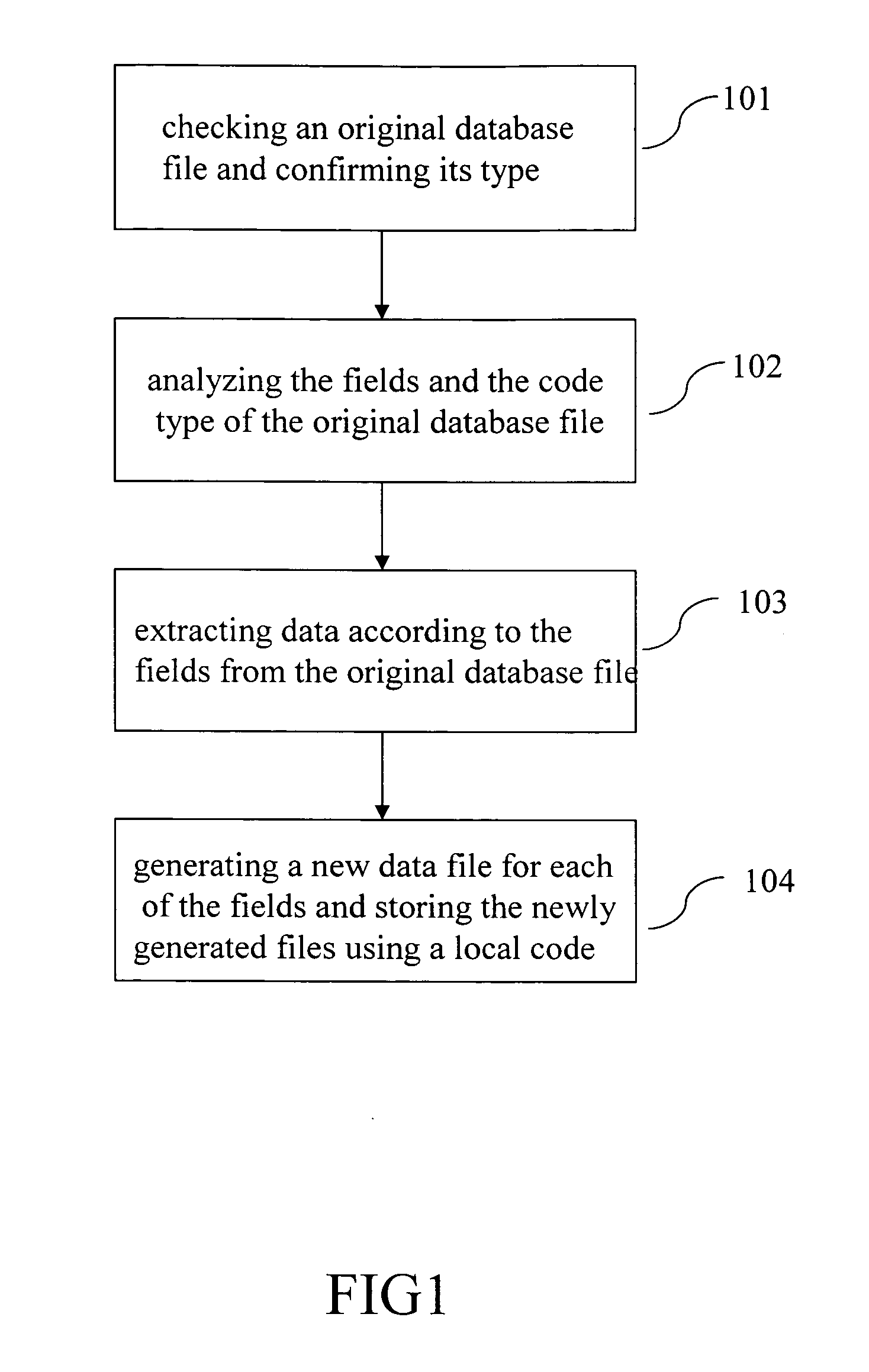Conversion method for multi-language multi-code databases
- Summary
- Abstract
- Description
- Claims
- Application Information
AI Technical Summary
Benefits of technology
Problems solved by technology
Method used
Image
Examples
Embodiment Construction
[0014] With reference to FIG. 1, the method first checks an original database file and confirms its type (step 101). From the database type, the method analyzes the fields and the code type of the original database file (step 102). Afterwards, the data are extracted according to the associated fields from the original database file (step 103). The extracted field data are used to generate a new database file and stored using the local code (step 104).
[0015] In step 101, the file type can be determined from the filename and suffix filename of the database file. When an application program needs to use these new files, the character set of the application program can directly read the new database file. The character set and the new data file have compatible local codes.
[0016] For example, some language learning programs supporting multiple languages may have their original materials in traditional Chinese, simplified Chinese, Japanese, Tai, Spanish, and English. However, the operat...
PUM
 Login to view more
Login to view more Abstract
Description
Claims
Application Information
 Login to view more
Login to view more - R&D Engineer
- R&D Manager
- IP Professional
- Industry Leading Data Capabilities
- Powerful AI technology
- Patent DNA Extraction
Browse by: Latest US Patents, China's latest patents, Technical Efficacy Thesaurus, Application Domain, Technology Topic.
© 2024 PatSnap. All rights reserved.Legal|Privacy policy|Modern Slavery Act Transparency Statement|Sitemap


